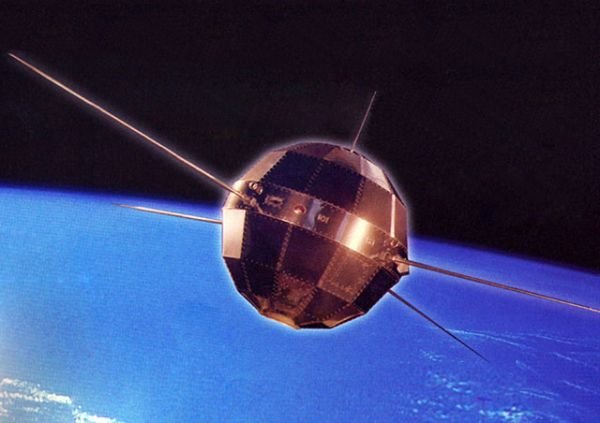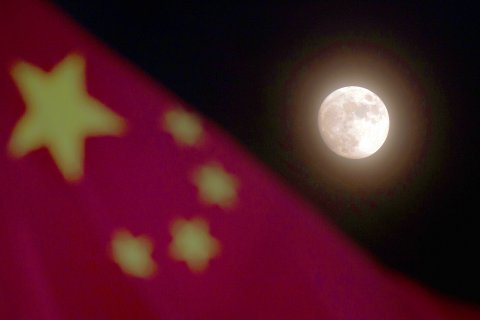A few days ago, I finished off a post I made about NASA plans for sending a submarine to Saturn's moon Titan with the assertion that the growth of China's space program might be the catalyst to launch humanity well and truly into space. I made that assertion because the rapid growth of China's space program has been truly impressive, and it is making other countries (like the USA) take notice. So here I want to outline what that growth has actually looked like, to show you guys both how impressive it has been and how exciting it is for those of us who dream of humanity in space.
China's space program was technically one of the first in the world, as it was originally announced in 1958. However, for the first 40 or so years of its existence, the program did not accomplish much (other than putting its first satellite, the Dongfanghong 1 into Earth orbit in 1970 and its first geostationary communication satellite into orbit in 1984.) In that time period, the USA and Russia had sent multiple satellites into space, probes into the depths of the outer solar system, and put both rovers and humans on the lunar surface. China was far behind.

Dongfanghong 1 - (Source)
But around the same time as China's massive economic upturn in the late 90's, the Chinese space program took off. In 2003, just a few years after first providing the program with real funding, China had put their first astronaut (or as Chinese astronauts are known, taikonaut) into Earth orbit on the Shenzou 5 space capsule. Since then, their ambitions and capabilities have exploded.

Yang Liwei, the first taikonaut in space - (Source)
Accomplishments of China's Space Program
- They launched the space station Tiangong 1 in 2011, and had three shuttles make contact with the station during its three-year operational lifespan. This means that they have the capability of assembling large-scale projects in space. They were also only the third country to do this, other than the United States and Russia (and excluding the myriad nations that worked on the International Space Station (ISS) with the help of the US and Russia)

Tiangong 1 - (Source)
- They put their first lunar rover, known as the Yutu rover (or "Jade Rabbit"), on the surface of the moon in 2011 as part of their Chang'e 3 lunar mission. That was the first rover to touch the lunar surface in almost 40 years.

Yutu Rover from Chang'e 3 lander's perspective - (Source)
Earlier this month, China launched Tiangong 2, a larger and more modern version of the Tiangong 1. It will take up orbit around the Earth and lays the groundwork for China to build a space station to rival the International Space Station. Essentially, China has the ability to build a space station that can rival the ISS, even though the ISS took the collaboration of the USA, Russia, the ESA, JAXA (Japans space agency), and Canada's space agency. It has done this in less than 20 years.
It has not only caught up to the USA and Russia in its capabilities, it is now eclipsing them in certain areas. Last month, China launched the first ever satellite to function on the basis of quantum entanglement. As China's state-run news agency Xinhua put it,
"in its two-year mission, QUESS is designed to establish 'hack-proof' quantum communications by transmitting uncrackable keys from space to the ground, and provide insights into the strangest phenomenon in quantum physics — quantum entanglement."

Launch of QUESS - (Source)
Future Plans
China as a major spacefaring state is here to stay. Their abilities are great, and their ambitions are even greater. In the coming decades they plan to
- Launch a Mars rover by 2020. Their concept plans have been released, and now they are looking for a name for the rover. In order to engage the Chinese public, and to build Chinese nationalism around their space program, they have created an open contest for the Chinese public to enter potential names and create a logo, one of which will be chosen.

China's Mars Rover Concept - (Source) - They have further plans to put humans on the moon by 2022 and to create a permanent lunar base (something that has never been done) by the early 2030's.
Conclusion
China's space agency's budget has been growing at an average of 10% a year for the past decade. As China continues to grow as an economic and, ultimately, world power, they will continue to launch themselves into space in a way that the United States and Russia currently seem to be unwilling (or unable) to do. At the rate that they are currently catching up to the Big Two in space-faring capability, I would not be surprised to see China's capabilities surpass those of the United States.

(Source)
However, as I wrote in my last post, there is nothing the United States is more afraid of than being "number 2." As such, I believe, and hope, that NASA's budget will once again start growing in response to the rapid advancements China are making. Perhaps we will follow through on our plans to land humans on Mars by the mid-2030's. I also see a huge opportunity here for the government and companies like Space X or Blue Origin to create unprecedented public-private partnerships for the advancement of mankind. Maybe the dreams of Elon Musk, along with those of a nation increasingly interested in Space, will finally put us back in the forefront of the race to the stars.
Sources
- http://www.space.com/34089-tiangong-1-fall-earth-2017.html
- http://www.space.com/34077-china-launches-tiangong-2-space-lab.html
- http://www.space.com/33833-china-mars-rover-lander-design-unveiled.html
- http://www.space.com/33760-china-launches-quantum-communications-satellite.html
- http://www.space.com/33681-china-moon-rover-yutu-dead.html
- http://www.businessinsider.com/nasa-should-be-worried-about-chinas-blossoming-space-program-2016-7
- http://www.businessinsider.com/how-big-is-chinas-space-program-2015-6
- http://www.businessinsider.com/chinas-secretive-space-program-takes-a-step-into-the-open-2015-1
- http://arstechnica.com/science/2016/06/chinas-powerful-new-rocket-makes-a-successful-debut-launch/
- http://spectrum.ieee.org/static/timeline-chinas-space-program-past-and-future
